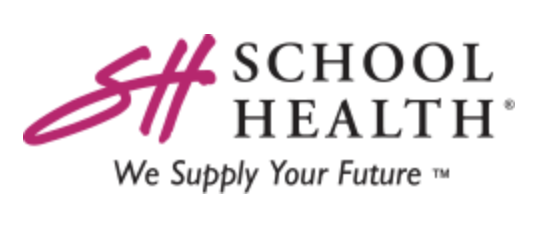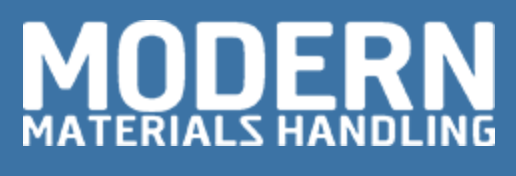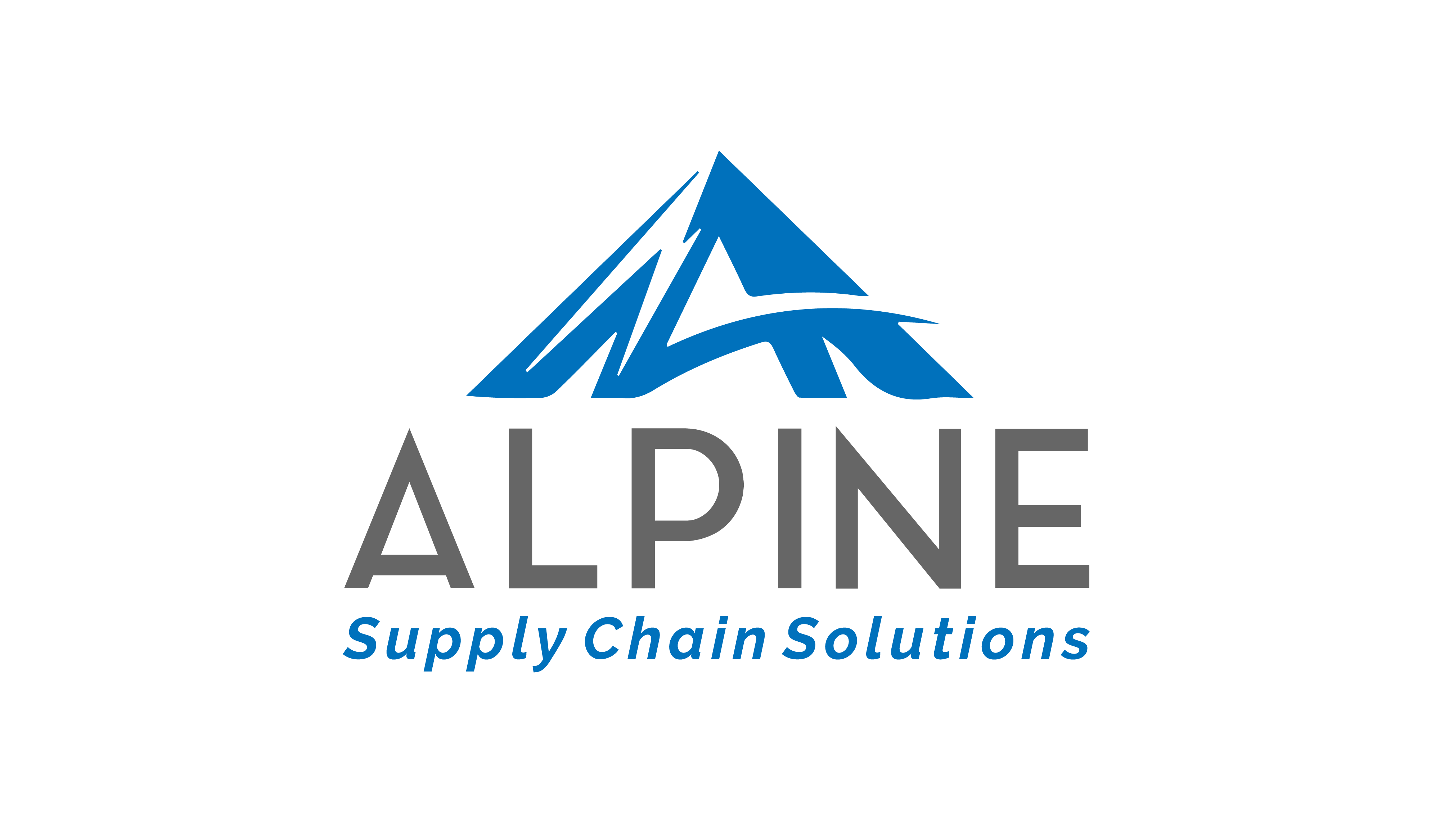
by Noelle Abarelli | Jan 17, 2024 | Blog
Sustainability has been a buzzword for a few years, and that’s not changing. According to the 2023 MHI Annual Industry Report, “The Responsible Supply Chain,” 48% of respondents reported increased influences to adopt a more sustainable supply chain. Consumers, stakeholders, regulators, and industry groups continue to pressure companies to take responsible steps to help the planet, and they can’t be ignored.
The folks over at Modern Materials Handling spoke to Hemateja Ari, Alpine’s Data Engineer, about all things sustainability, including packaging. In their article, Time to Act on Sustainability, they dive into the many ways supply chain executives can update their operations to address sustainability concerns, including smarter packaging, racking, alternate power sources, and artificial intelligence (AI).
Ari says one way to address sustainability is to focus on packaging as it’s a great opportunity for waste reduction. “Efficient packaging weighs and costs less to ship, and biodegradable packaging can reduce the carbon footprint.” He believes one of the easiest targets for reducing carbon footprint lies in smarter packaging, like right-sizing to send packages with less fill.
Retailers are also trying to do their part to help with sustainability. Amazon, for example, now offers customers the choice between next-day delivery or a slightly delayed delivery using fewer packaging materials. Ari understands most people will always choose next-day, and proposes removing the choice altogether so the more sustainable option is done every time. It’s a small step to take, but considering Amazon ships out 1.6 million packages per day, the impact would be tremendous.
While changing processes may seem overwhelming, the need to address sustainability is critical. Ari recommends working with your team to determine where it’s best to focus your sustainability efforts. Better yet, there is no need to implement a large and expensive solution, he recommends starting small and scaling as needed. For more tips from Ari and the other experts MMH spoke with, read the full article here. If you’re looking for new ways to make the most out of your supply chain investment, we’re here to help, simply reach out.

by Alpine Supply Chain | Dec 20, 2020 | Strategic Planning, Supply Chain News, Warehouse Consulting, Warehouse Slotting
School Health Corp., an Alpine Supply Chain Solutions client, was recently featured in Modern Materials Handling article discussing their new warehouse project using innovative labeling and strategic warehouse slotting optimization.
“While we are adept at warehouse operations and order fulfillment, our current team had never designed a warehouse from scratch before,” says Beth Reed, School Health’s project manager/training developer.
“With this in mind, how could the company slot its product inventory for maximum efficiency and throughput? What is the best way to handle seasonal spikes in demand for certain products, which typically occur at the start of each new school year? And, how should it number and label its bins—for optimal performance with its existing warehouse management software?”

Beth Reed, Project Manager & Training Developer at School Health
To receive assistance with its warehouse location methodology and slotting plans, School Health Corp worked with Alpine SupplyChain Solutions. The project’s goals included minimizing the time and distance required to replenish key products; reducing workers’ bend-and-reach requirements for placing and picking products; and organizing its inventory more efficiently, leading to greater throughput.
“In my role, I hadn’t previously spent a lot of time thinking about warehouse location address methodology,” Reed notes. “But working with Alpine made the entire project team appreciate the science involved in slotting our products.” She continues, “An optimally slotted warehouse supports efficiency and profitability. Just as important, it also minimizes the time and effort involved in key tasks like product putaway, picking and order fulfillment, which our employees appreciate.”

by Alpine Supply Chain | Jul 13, 2020 | Supply Chain Consulting, Supply Chain News, Warehouse Management System
Supply Chain Management Review and Modern Material Handling sat down with Michael Wohlwend to discuss WMS.
Modern: You’ve been around the supply chain software space throughout your career. Tell us about the different roles you’ve held.
Wohlwend: I was a warehouse distribution supply chain consultant for the first third of my career, and I installed my first warehouse management system (WMS) in 1994. That was followed by 7.5 years at Manhattan and 6.5 years at SAP. Now, I’m back to the consulting side.
Modern: Since you’ve worked in both the enterprise resource planning (ERP) and WMS spaces, what have been the most important developments during your career? We’ll start with ERP.
Wohlwend: Originally, an ERP system was finance and accounting. And then, they added manufacturing resource planning and planning. After that, ERP tried to be all things to all people and address the end-to-end supply chain. That had its limitations and opened the door for best-of-breed solution providers, especially with the Cloud.
Great examples of that are Salesforce.com for CRM and Workday for HR. Now, we see ERP companies buying Cloud-based software companies with a subscription model to offer best-of-breed solutions under the ERP umbrella. The technology is evolving.
Modern: How about the WMS space?
Wohlwend: For a time, CIOs trying to reduce their overall software footprint were getting the WMS module from an ERP provider like Oracle or SAP. In situations that weren’t complex, like pallet in and pallet out, the WMS from an ERP was good enough. Now, there’s a resurgence of WMS. The real trend I’m seeing is global manufacturers moving to a 3PL for their distribution and deferring to the 3PL’s WMS. And, most of the 3PLs will have a low-cost WMS, with less functionality, and a higher cost version. Depending on complexity, the 3PL will choose which version to roll out for their customer.
Modern: What are your clients struggling with today, particularly with WMS systems?
Wohlwend: Whenever you’re implementing a WMS, you run out of resources, time or money. So when people install a WMS, they never turn everything on because they run out of one of those three. Then, they run into an issue and don’t realize they have the functionality.
I recently went to a site that wasn’t doing directed putaway or batch picking because they’d never turned on the functionality. It cost them $52,000 and they had an ROI in two weeks. The No. 2 reason is that they business model changed. For example, with Covid-19 now they may need to turn on each picking and need to configure along with cartonization. Their WMS has the functionality but needs to be configured.
Modern: Given all the changes in fulfillment processes, what should a company do?
Wohlwend: The most common thing I see is that they didn’t turn on all the functionality, and they haven’t upgraded, so now they’re at a pivot point. Do I keep an existing system and “add on modules” like voice, labor management, or slotting modules? Or, do I rip and replace? There are companies adding “Add on Modules” on top of old versions of EXE and Catalyst.
The problem with ripping and replacing is that a lot of the new systems are in the Cloud. That sounds good, but I just worked with a 3PL that couldn’t get Internet access at their site. They had to have a server on site. And when you’re talking about an automated system that requires sub-second response times, I believe it has to be on-premise. You just can’t risk your order fulfillment system on a connection that could go down.

by Alpine Supply Chain | Jun 26, 2020 | Supply Chain News, Warehouse Consulting, Warehouse Consulting News
Modern Materials Handling article by Bob Trebilcock is good round up of the supply chain industry’s response to Covid-19 amid a lack of concrete guidelines.
As the economy begins to recover, distribution center operators will be challenged with not just operating efficiently, but safely. Emerging technologies may aid in the effort.
“Our industry has always looked for solutions to operate in an efficient and cost-effective way; now, it will also struggle with new issues related to preventing the spread of a virus—either Covid-19, or whatever is around the bend. They will largely be on their own: As of this writing, the CDC guidelines for re-opening businesses were polite suggestions, not prescriptions. What’s more, while we know lawsuits will be filed by employees who test positive for the virus after we all return to work, we don’t yet know whether those claims will be governed by OSHA and worker compensation or the courts. The message is essentially:
Get back to work, and good luck.
If there is light at the end of the tunnel, it’s that some potential solutions are coming to market from materials handling technology providers. Make no mistake: This is an emerging area, and there’s no guarantee any of these solutions will create the bullet-proof, safe operating environment we will all strive for. Nor is this a comprehensive list: New emails are showing up in our inbox daily. But, the following companies are developing solutions for plants and DCs around screening, workplace social distancing and finally, contact tracing should an associate test positive. They, or their competitors, may be worth investigating as you look to create your own safe working environment.”
A first step to a safer workplace is to create basic processes around cleaning, disinfecting, scheduling and, perhaps most importantly, what to do if an associate tests positive. Michael Wohlwend, managing principal with Alpine Supply Chain Solutions, relates the story of a client who had to shut down a warehouse for two weeks following a positive Covid case. “While they were cleaning and sanitizing the facility, every team leader was on the phone with suggestions for new procedures that would give the team the confidence to come back to work,” Wohlwend recalls. “It was a real wake up call.”
Just as important as the new procedures, which might vary from one facility to the next, is the ability to enforce them and demonstrate that they were followed if needed. To that end, Alpine worked with Procurant, a California-based technology company, to develop a phone app for auditing workplace procedures. It is created on a Cloud-based food safety tool that Procurant developed for tracking and tracing in the agricultural supply chain.
“You can set up as many checklists as you need, and then create a time stamp when tasks are completed,” Wohlwend says. “At the end of the day, you can create reports of what was done, who did it, when they did it and any corrective actions that were taken.” Training videos can be accessed using the tool for easy access, and alerts can be e-mailed or texted to individuals who need to be contacted. “If a person tests positive, you now have a checklist of what you need to do, and you can produce an audit trail of what was done,” Wohlwend says.

Bob Trebilcock
About Bob Trebilcock, editorial director, has covered materials handling, technology, logistics and supply chain topics for nearly 30 years. In addition to Supply Chain Management Review, he is also Executive Editor of Modern Materials Handling.








